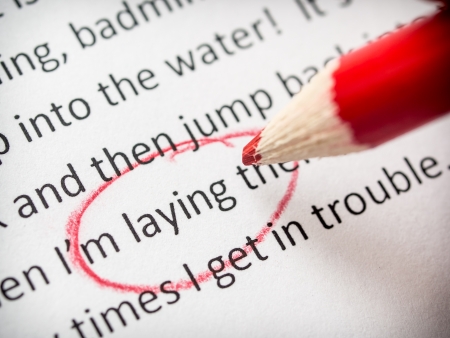在托福听力的备考中,选择一个适合自己的听力素材是非常重要的。而巴郎听力则是很多学生冲刺高分听力的必备选择。由于他的内容基本可以跟国外讲座水平接轨,所以是非常适合作为托福听力考前练习素材。那么在以下内容中我们就为大家带来巴朗听力原文,希望能为大家的备考带来帮助。

Professor:
$ We know that the Chinese had been aware of basic photographic principles as early as the fifth century B.C., and Leonardo da Vinci had experimented with a dark room in the 1500s, but it was a number of discoveries in chemistry during the eighteenth century that, uh, accelerated the development of modern photography. The discovery that silver salts were light sensitive led to . . . experimentation with images of light on a . . . a surface that had been coated with silver. Often glass was used in the early images. But the problem was that these images were ephemeral—fading after only a short time. Some of the chemists who worked with them called them fairy pictures, and considered them, uh, that they were only momentary creations, uh, that they would disappear.
Okay. How to fix the image permanently was one of the most important, uh, challenges . . . of the early photographer chemists. In France, in about 1820, Nicephore Niepce discovered a method for fixing the image after a long exposure time, oh, probably eight hours. So, although his work was considered interesting, it was, uh, uh, largely dismissed for . . . as impractical. Nevertheless, one of his associates, Louis Daguerre, managed to find a way to, uh, reduce . . . the exposure time to less than twenty minutes. So the story goes, in 1835, Daguerre was experimenting with some exposed plates, and he put a couple of them into his chemical cupboard, so a few days later, he opened the cupboard, and, uh, to his surprise, the latent images on the plates had developed. At first, he couldn’t figure out why, but eventually, he concluded that this must have occurred as a result of mercury vapor . . . from a broken thermometer that was also in the, uh, enclosed in the cupboard. Supposedly, from this fortunate accident, he was able to invent a process for developing latent images on . . . on exposed plates.
The process itself was somewhat complicated. First, he exposed copper plates to iodine which

released fumes of, uh, of light-sensitive silver iodide. These copper plates were used to capture the image, and by the way, they had to be used almost immediately after their exposure to the iodine. So, the image on the plate was then exposed to light for ten to twenty minutes. The plate was developed over mercury heated to about 75 degrees centigrade, which . . . that caused the mercury to amalgamate with the silver. Now here’s the ingenious part—he then fixed the image in a warm solution of common salt, but later he began using sodium sulphite. Anyway, after he rinsed the plate in hot distilled water, a white image was left permanently on the plate. And the quality was really quite amazing.
But, um . . . the process had its limitations. First, the images couldn’t be reproduced, so each one was a unique piece, and that, uh, greatly increased the cost of photography. Second, the image was reversed, so the subjects would actually see themselves as though they were looking in a mirror, although, uh, in the case of portraits, the fact that people were accustomed to seeing themselves in a mirror made this less . . . this problem less urgent than some of the others. Nevertheless, some photographers did point their cameras at a mirrored reflection of the image that they wanted to capture so that the reflection would be reversed, and a true image could be produced. Okay. Third, the chemicals and the fumes that they released were highly toxic, so photography was a very dangerous occupation. Fourth, the surface of the image was extremely fragile and . . . had to be protected, often under glass, so they didn’t disintegrate from being . . . from handling. The beautiful cases that were made to hold the early images became popular not only for aesthetic purposes but, uh, but also for very practical reasons. And finally, although the exposure time had been radically reduced, it was still . . . inconveniently long . . . at twenty minutes, especially for portraits, since people would have to sit still in the sun for that length of time. Elaborate headrests were constructed to keep the subjects from moving so that the image wouldn’t be ruined, and, uh, many people simply didn’t want to endure the discomfort.
But, by the mid 1800s, improvements in chemistry and optics had resolved most of these issues. Bromide as well as iodine sensitized the plates, and some photographers were even using chlorine in an effort to decrease exposure time. The . . . the portrait lens was also improved by reducing the size of the opening, and limiting the amount of light that could enter, so the exposure time was about twenty seconds instead of twenty minutes. And negative film had been introduced in France, sorry, in England, and negatives permitted the production of multiple copies from a single image. So, photography was on its way to becoming a popular profession and pastime.
相关资料
相关推荐
-
托福精听书籍推荐哪个
2024-02-20![托福精听书籍推荐哪个]()
-
托福阅读带做题的书籍 有什么
2023-12-15![托福阅读带做题的书籍 有什么]()
-
托福到底能考多少分?19年必练真题告诉你答案
APP专享![托福到底能考多少分?19年必练真题告诉你答案]()
-
托福必读小说有哪些
2023-12-11![托福必读小说有哪些]()
-
托福单词背诵书籍有哪些
2023-11-07![托福单词背诵书籍有哪些]()
-
托福备考听力推荐什么教材
2023-11-20![托福备考听力推荐什么教材]()
-
托福精选资料有哪些
2023-11-01![托福精选资料有哪些]()
-
自学托福看什么教材
2023-11-16![自学托福看什么教材]()
-
提升托福听力可以看什么资料
2024-02-21![提升托福听力可以看什么资料]()
-
考托福阅读 应该看什么类型的书
2023-11-20![考托福阅读 应该看什么类型的书]()
-
小托福备考用书有哪些
2023-11-15![小托福备考用书有哪些]()
-
托福书籍去哪买
2024-02-23![托福书籍去哪买]()
-
托福基础读写教材有哪些
2023-08-10![托福基础读写教材有哪些]()
-
托福阅读口语资料推荐
2023-09-25![托福阅读口语资料推荐]()
-
托福阅读口语资料推荐书籍
2024-02-18![托福阅读口语资料推荐书籍]()
-
考托福要哪些词汇书
2023-05-30![考托福要哪些词汇书]()
-
考托福需要看哪些书籍
2023-11-16![考托福需要看哪些书籍]()
-
托福口语书籍类型有哪些
2023-09-21![托福口语书籍类型有哪些]()
-
杭州托福资料哪家正规
2023-06-25![杭州托福资料哪家正规]()
-
考托福必备的听力书籍
2024-01-31![考托福必备的听力书籍]()
-
新托福词汇精选书
2023-10-20![新托福词汇精选书]()






















